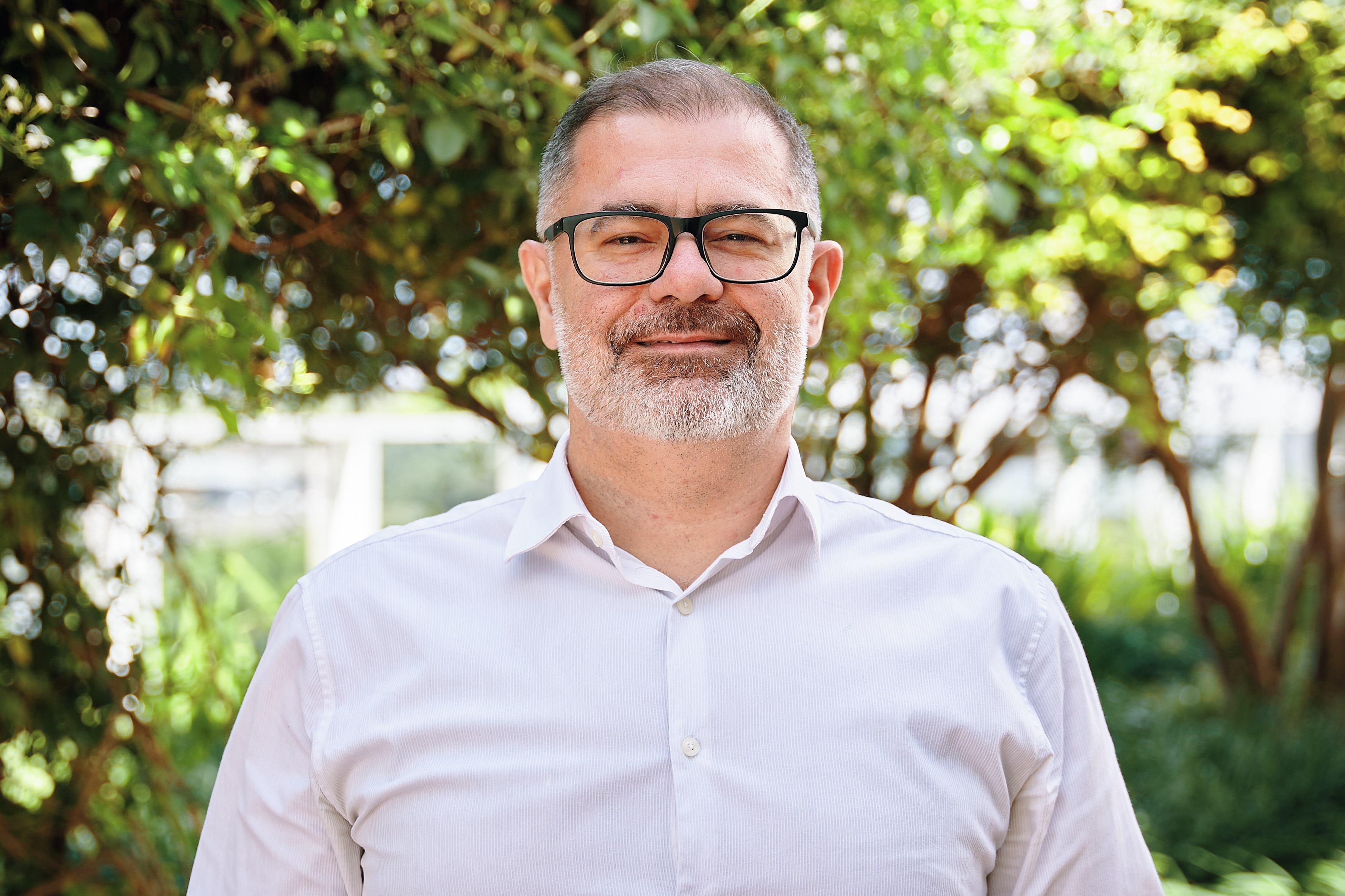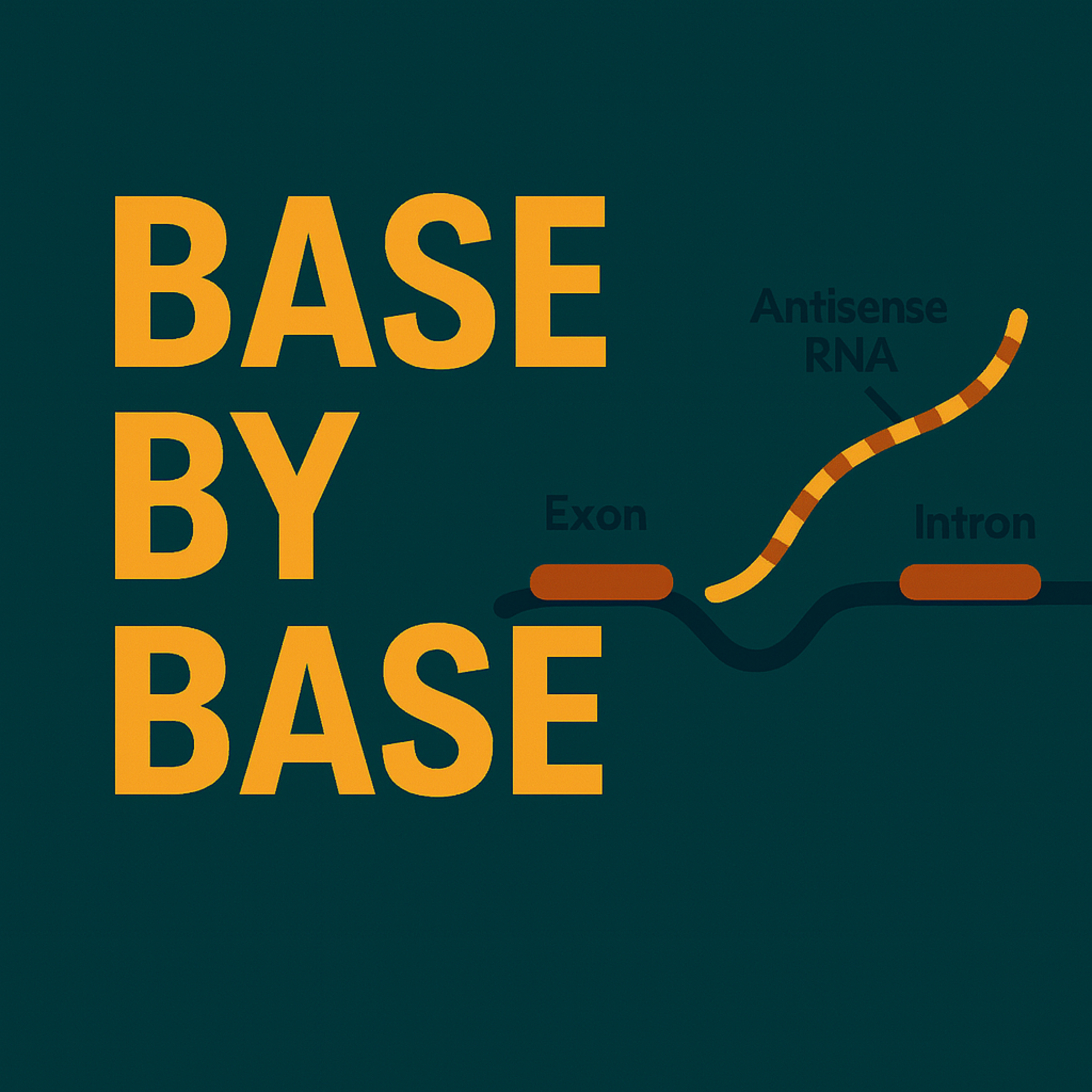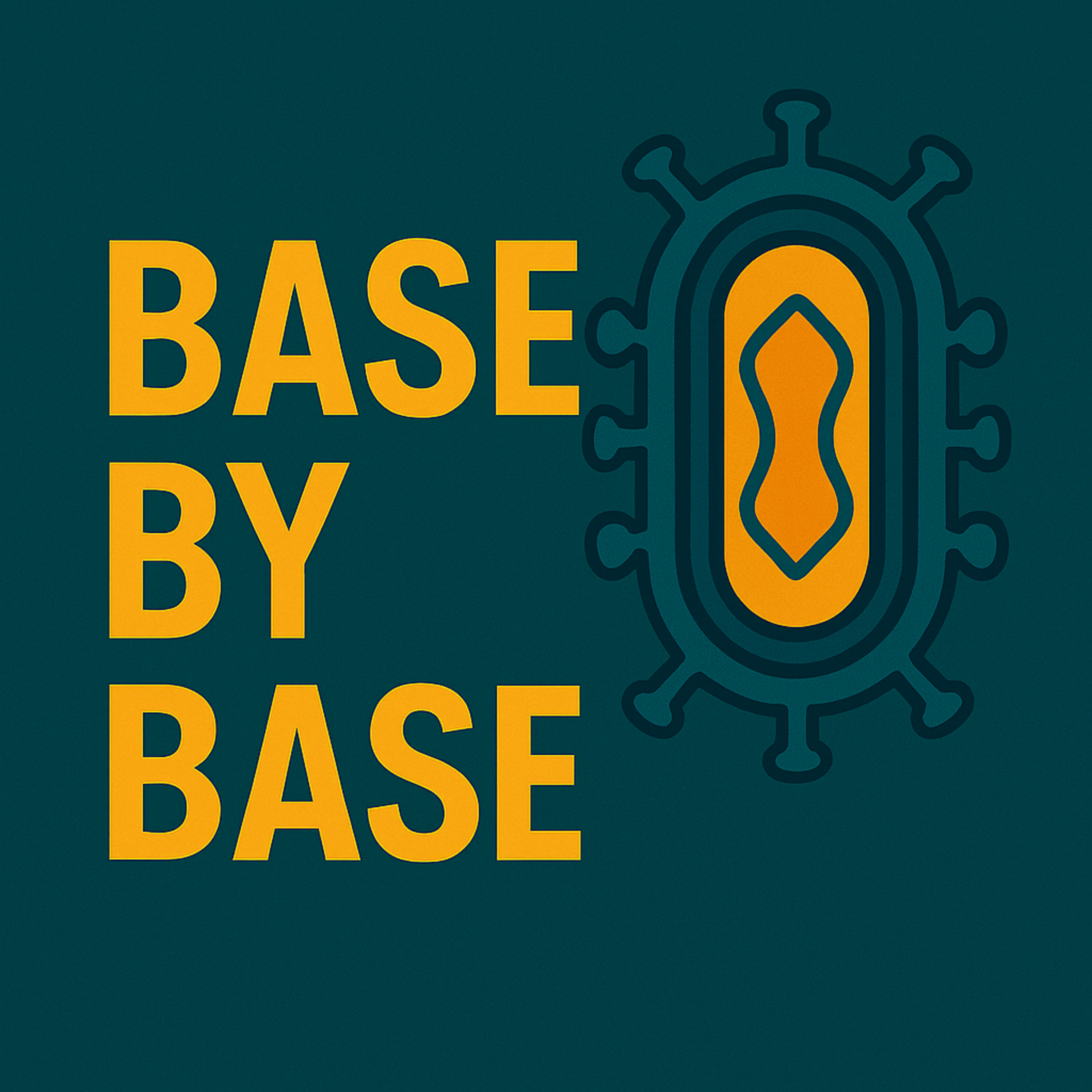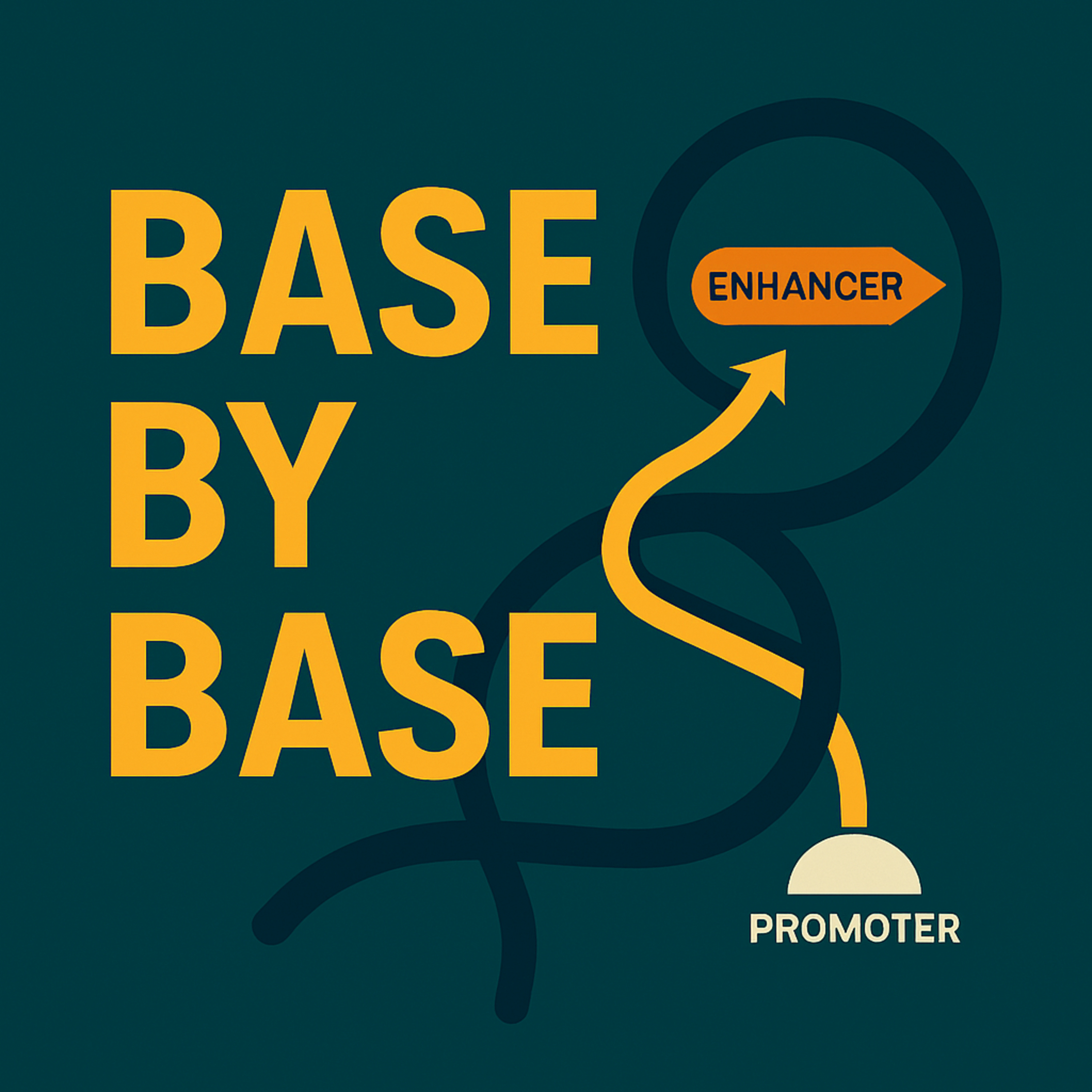Episode Transcript
[00:00:14] Speaker A: Welcome to Base by Bass, the papercast that brings genomics to you wherever you are.
So we're diving straight into something pretty fascinating today. A real demographic puzzle from, well, thousands of years ago.
[00:00:28] Speaker B: Yeah, it's one of those things in ancient genetics that seems almost contradictory when you first look at it.
[00:00:32] Speaker A: Exactly. We're talking about the post neoleptic period, right. Roughly 5,000 to 7,000 years back across the old world.
[00:00:40] Speaker B: Africa, Europe, Asia.
[00:00:43] Speaker A: And you see this, well, this split in the data. If you track the maternal line, mitochondrial.
[00:00:48] Speaker B: DNA, it looks like steady growth. You know, the female genetic diversity just keeps increasing, like you'd expect from a growing population.
[00:00:55] Speaker A: But then you look at the male side, the Y chromosome, passed only father to son, and there it's a totally different story.
[00:01:02] Speaker B: It's. Well, it's like a genetic crash. A huge, quite sudden drop in male genetic diversity. We call it the Y chromosome bottleneck.
[00:01:10] Speaker A: And massive is kind of an understatement, isn't it?
[00:01:12] Speaker B: Oh, absolutely staggering. The genetic data implies the male effective population size just plummeted. We're talking maybe 1 20th, maybe even less of what it was before.
[00:01:23] Speaker A: Okay, hang on. Effective population size. We need to define that for everyone listening. That's not just the men walking around, is it?
[00:01:30] Speaker B: No, no, great point. It's a genetic concept, not all or dollar. It's basically an estimate of how many individuals are actually contributing genes to the next generation. It's almost always smaller than the census size, the actual headcount. Right, but in this case, the calculation pointed to this extreme disparity. Something like 17 females contributing genetically for every one male.
[00:01:53] Speaker A: 17 to 1 for potentially thousands of years. I mean, how does that even happen? How could you have such a massive male specific genetic wipeout without the whole population collapsing?
[00:02:03] Speaker B: That's the core question, isn't it?
[00:02:05] Speaker A: It really makes you think maybe the cause wasn't purely biological. Could it be something about, you know, human society, social structures?
[00:02:13] Speaker B: That's precisely the angle explored by the researchers we're focusing on today. Tianshen Zhang, Alan J. Ah and Marcus W. Feldman, all affiliated with Stanford University.
[00:02:22] Speaker A: Right. From the Departments of sociology, Mathematical and computational, SC Biology. A real interdisciplinary team.
[00:02:28] Speaker B: Exactly. And their work really stands out because it brings together anthropology, genomics and mathematical modeling. It pushes our understanding of how sociocultural shifts can literally reshape our genetic landscape.
[00:02:43] Speaker A: So let's ground this again. This intense bottleneck, y chromosome specific, 5,000 to 7,000 years ago, what were the specific signals in the genesis, besides that plunging effective population size?
[00:02:55] Speaker B: Well, alongside that NALR drop The phylogenetic trees, the family trees essentially have the Y chromosomes showed something else really important, these star like expansions.
[00:03:04] Speaker A: Star like expansions, meaning?
[00:03:06] Speaker B: It means that within certain major Y chromosome haplogroups, think large branches of the male family tree, like R1B in Europe or O in Asia, you suddenly see lots of new lineages branching off very rapidly from a single point, like rays from a star.
[00:03:20] Speaker A: Okay, so let me see if I've got this straight. At the exact same time that overall male diversity is crashing, with whole lineages disappearing, you have a few specific male lines exploding, becoming incredibly successful. Like a tiny number of men ended up being the ancestors for huge numbers of people later on.
[00:03:38] Speaker B: You've got it. That's the paradox. Massive loss on one side, huge expansion on the other. Only in the male line.
Mitochondrial DNA doesn't show this pattern at all.
[00:03:48] Speaker A: Which, as you said, rules out the simple explanations.
[00:03:51] Speaker B: Right. Things like climate change are a big epidemic. Those would likely hit both sexes, maybe not identically, but you wouldn't expect this, you know, 17:1 ratio.
[00:04:01] Speaker A: And the timing issue is crucial too. This bottleneck peaks well after farming got started in these regions.
[00:04:06] Speaker B: Yeah, like one or two thousand years after the Neolithic transition really takes hold.
So it's not just about the initial straight of agriculture causing upheaval. It's something happening within these early farming societies later on.
[00:04:18] Speaker A: What about the idea of wealth inequality? You know, the hypothesis that maybe a few rich or powerful men just had way more children?
[00:04:25] Speaker B: That's been proposed, sure. And increased social stratification does increase male reproductive variants, no doubt about that. Right, but the timing is wrong again. The bottleneck starts to ease up, the diversity begins to recover, right around the time that more complex hierarchical societies, chiefdoms, states start to form.
[00:04:44] Speaker A: Ah, so if wealth concentration was the main driver, you'd expect the bottleneck to get worse as societies got more stratified, not better.
[00:04:52] Speaker B: Exactly. The pattern just doesn't fit something else. Something about the social structure of those intermediate societies must have been the key driver.
[00:05:00] Speaker A: So there's the gap. A huge genetic event clearly visible in the Y chromosome data. But the standard biological or simple socioeconomic models just don't explain it.
[00:05:10] Speaker B: And this is where the Stanford team comes in with their, well, really quite innovative sociocultural hypothesis, which centers on patrilineal kin groups. Basically groups where descent, identity, property, everything flows down the male line.
They propose that intense violent competition between these patrilineal groups was the engine behind the bottleneck.
[00:05:30] Speaker A: Okay, competition between groups makes sense, but how does that specifically crash Y chromosome diversity they use this term, cultural hitchhiking.
[00:05:39] Speaker B: Yeah, cultural hitchhiking. Think of it this way. If your group identity and your Y chromosome are tightly linked, which they are, in a strictly patrilineal system.
[00:05:47] Speaker A: Right. Everyone in the group shares, or is supposed to share a common male ancestor.
[00:05:53] Speaker B: Exactly. Then the success or failure of the cultural group directly drags the associated Y chromosomes along with it. If your group wins, a conflict, expands, takes resources, your group's Y chromosome lineage spreads.
[00:06:07] Speaker A: And if your group loses, gets wiped.
[00:06:10] Speaker B: Out or absorbed, your group's specific Y chromosome lineage could just vanish completely, even if the total number of men overall didn't drastically decline.
[00:06:19] Speaker A: That's the really critical idea, isn't it? Simulating this massive genetic loss without needing a massive demographic die off of males. How do they actually model that?
[00:06:27] Speaker B: They used two main approaches. First, an analytical one, using a modified version of the Lotka Voltaire equations, which.
[00:06:33] Speaker A: Are usually used for predator prey dynamics. Right, right.
[00:06:36] Speaker B: They adapted it to model competing male lineages sharing access to a female population. And it showed mathematically that competition alone could drive some male lineages extinct, while others survived, even if the total population size was stable.
[00:06:51] Speaker A: Okay, so the principle works. And the second model was that to simulate it on a larger scale.
[00:06:57] Speaker B: Pretty much. It was a computational grid model. They simulated sort of artificial societies with different cultural tribes and different genetic haplogroups over many generations.
[00:07:07] Speaker A: And they could track things like groups fighting, splitting apart, dying out.
[00:07:10] Speaker B: Exactly. And the crucial comparison was running simulations under PT or patrilineal conditions, where your Y chromosome perfectly determined your group membership versus NPT non petrol conditions, where that link was broken.
[00:07:24] Speaker A: So in the PT model, the Y chromosome and the tribe are basically locked together.
[00:07:28] Speaker B: Yes, and this highlighted two key mechanisms. First, petrilony itself creates really high Y chromosome homogeneity within each group.
After a few generations, most men in a successful patrilineal group will carry the Y chromosome of the group's founder or his immediate descendants.
[00:07:47] Speaker A: Like a genetic clan?
[00:07:49] Speaker B: Sort of, yeah. And the second mechanism kicks in during conflict, when these highly homogenous groups fight and one group is defeated.
[00:07:56] Speaker A: The casualties aren't random. Genetically, they're all clustered within that specific Y chromosome lineage.
[00:08:01] Speaker B: Precisely. So if a whole group is wiped out or assimilated after losing a conflict, its unique Y chromosome signature can be completely erased from the population in one go. Group extinction becomes lineage extinction, which leads.
[00:08:14] Speaker A: To that massive drop in overall diversity we see in the ancient data. Did the simulations actually reproduce the bottleneck?
[00:08:21] Speaker B: They absolutely did in the PT simulations. Consistently over about 1500 years, which is roughly 60 generations. In their model, they saw a huge reduction in the number of different Y chromosome haplogroups. It effectively recreated the inferred genetic bottleneck. Even though the total number of simulated males was kept constant, no actual die off was needed in the model, just lineage replacement through competition.
[00:08:46] Speaker A: And what about the other side of the coin? Those star like expansions?
[00:08:49] Speaker B: The models nailed that too. In pretty much all the PT simulations where competition led to a few groups surviving, those surviving lineages rapidly increased in frequency, dominating the genetic landscape. Just like the star phylogenies we see in the real ancient DNA data.
[00:09:04] Speaker A: That connection to the actual ancient DNA evidence is so powerful. You mentioned things like Bell Beaker and Corded Ware cultures in Europe, right?
[00:09:12] Speaker B: This is where the concept of coalescence time becomes really important.
[00:09:15] Speaker A: Okay, let's define that. Coalescence is like tracing ancestry backwards.
[00:09:19] Speaker B: Yeah. Think of it as how far back you have to go in time before all the different Y chromosome lineages currently in a population merge or coalesce into a single common ancestor.
[00:09:30] Speaker A: So deep coalescence means that common ancestor lived a very long time ago.
[00:09:34] Speaker B: Right. And shallow coalescence means the common ancestor is much more recent.
[00:09:38] Speaker A: And in those post Neolithic farmer cultures.
[00:09:41] Speaker B: It'S incredibly shallow coalescence. For the Y chromosomes, strikingly shallow. Like for the Bell Beaker culture, something like 81% of the males sampled belonged to just one specific sub branch of haplogroup R1b, called R1b.
[00:09:56] Speaker A: S116.81%. That's astounding. It basically means a huge number of men in that cultural group shared a single paternal ancestor who lived not that long before them.
[00:10:05] Speaker B: Exactly. Same kind of pattern with Corded Ware males, mostly belonging to R1AM417.
It strongly implies these very recent, incredibly successful patrilineages just swept through, replacing or absorbing almost everyone else.
[00:10:20] Speaker A: Which fits the model of competitive patrilineal groups perfectly.
[00:10:24] Speaker B: It really does. And it contrasts sharply with say, hunter gatherer samples from the same periods or regions, which tend to show much deeper Y chromosome coalescence, times more diversity, older lineages.
[00:10:34] Speaker A: So this links the genetics directly to a specific kind of social organization that seems to have flourished in that particular period.
[00:10:40] Speaker B: Yes, and this connects beautifully to anthropological theory, particularly this idea of a curvilinear trend in the political importance of kin groups.
[00:10:48] Speaker A: Curvilinear meaning?
[00:10:49] Speaker B: Meaning that these patrilineal corporate kin groups, these competing clans or tribes, seem to be most powerful and politically dominant in societies of an intermediate scale.
[00:10:59] Speaker A: Not small hunter gatherer bands and not large Complex states, but that middle ground.
[00:11:04] Speaker B: Exactly the kind of societies that were common in the old world during that 5,000 to 7,000 years ago window and post Neolithic, larger than hunter gatherers, often agricultural or pastoral, but mostly acephalous, meaning without strong central rulers or pre state.
[00:11:22] Speaker A: So the intense intergroup competition driven by these patrilineal groups was sort of bracketed in time.
[00:11:27] Speaker B: That's the idea. It wasn't the main dynamic in small nomadic groups. And it got suppressed or at least changed when larger states emerged with central authorities who could, you know, quell feuds and regulate violence to some extent.
[00:11:39] Speaker A: And that timing fits the bottleneck period perfectly. Starting after the Neolithic really gets going. And easing off as states begin to.
[00:11:46] Speaker B: Form, it aligns incredibly well.
[00:11:48] Speaker A: Are there any modern or historical groups that maybe give us a glimpse of this kind of dynamic?
[00:11:54] Speaker B: Well, the paper mentions Central Asian pastoralist groups. Many of them historically and some even more recently, were organized into quite powerful, often competing patricklans and their genetics. They often show remarkably low Y chromosomal diversity compared to other population.
Been suggested that some of these groups represent a kind of living echo of that intermediate social stage. And their Y chromosome diversity might still reflect the effects of that ancient bottleneck, perhaps never fully recovering.
[00:12:22] Speaker A: So the big takeaway here for you listening is potentially huge. It means we can start using patterns in ancient DNA, like this shallowness of Y chromosome coalescence as a kind of proxy measure, a way to infer things about past social and political reality, like how intense competition was between groups or how rigidly patri a society might have been.
[00:12:44] Speaker B: It really turns ancient DNA into a tool for social science in a way, provided you have that patrilineal context.
[00:12:51] Speaker A: Of course there are limits, right? The model doesn't explain everything.
[00:12:54] Speaker B: No, definitely not.
One key thing is the model treats patrilliny itself as a given, an exogenous factor. It doesn't explain why so many societies adopted patrilineal systems in the first place around this time. That's a whole other massive question.
[00:13:09] Speaker A: Right? The origins of patrilleny itself. And there were some technical limitations too.
[00:13:13] Speaker B: Yeah, computational limits at the time meant they mostly modeled competition between existing haplogroups, rather than simulating every single new mutation on the Y chromosome itself, which would be even more complex.
But the core principle holds.
[00:13:26] Speaker A: So, summing this all up, the great Y chromosome bottleneck, this massive crash in male genetic diversity 5,000 to 7,000 years ago, it wasn't necessarily about men dying off in huge numbers.
[00:13:38] Speaker B: Probably not. It looks much more like a sociocultural purge. Of male lineages driven by the rise of competitive patrilineal groups.
[00:13:46] Speaker A: Culture, specifically the structure of kinship and the nature of intergroup conflict acted as this incredibly powerful selective force on the Y chromosome.
[00:13:53] Speaker B: Exactly. Entire branches of the human paternal tree were pruned away not by disease or climate, but by social dynamics. That's the power of cultural hitchhiking.
[00:14:03] Speaker A: It really makes you wonder, doesn't it? If cultural forces related to kinship and conflict shaped our genes so profoundly back then, what cultural forces might be acting on our genomes today? Perhaps in ways we haven't even begun to detect or understand. Things related to. To, I don't know, Globalization, Digital interaction, Economic systems.
[00:14:22] Speaker B: That's the million dollar question, isn't it?
[00:14:24] Speaker A: Yeah.
[00:14:24] Speaker B: What are the selective pressures now?
[00:14:26] Speaker A: Definitely something to think about.
This episode was based on an Open Access article under the CCBY 4.0 license. You can find a direct link to the paper and the license in our episode description. If you enjoyed this, follow or subscribe in your podcast app and leave a five star rating. If you'd like to support our work, use the donation link in the description.
Thanks for listening and join us next time as we explore more science base by base.




